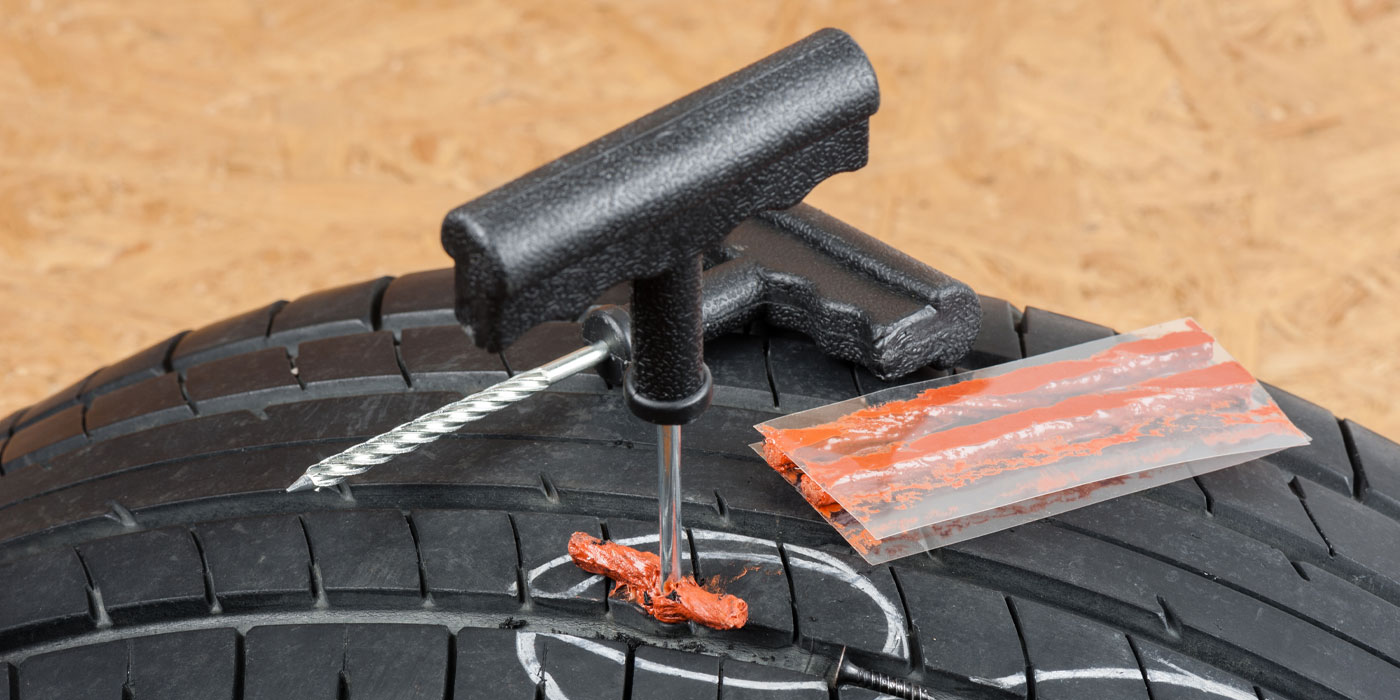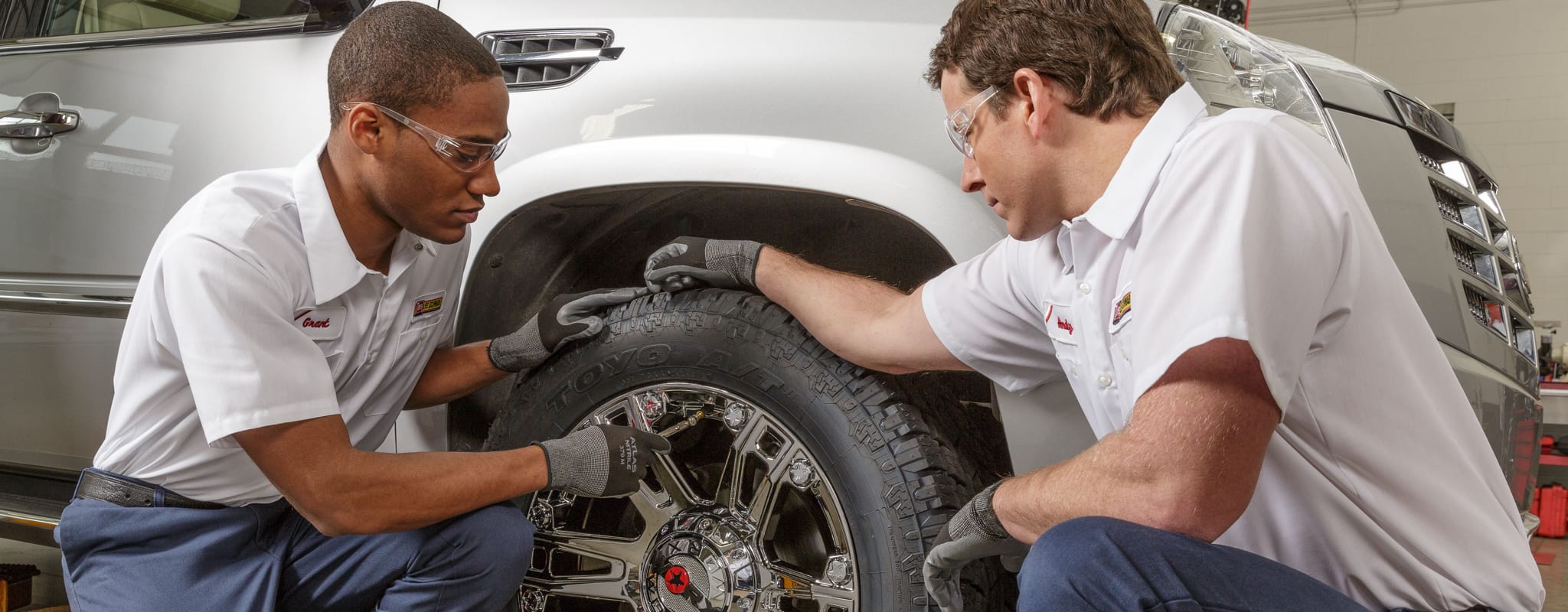Morris Tire Service: Comprehensive Tire Treatment
Morris Tire Service: Comprehensive Tire Treatment
Blog Article
Professional Guide to Tire Repair Work: Whatever You Need to Know
In this detailed guide, we will decipher the complexities of tire repair, dropping light on the different kinds of repair work sets available and offering useful insights into when it might be time to bid farewell to a worn-out tire. Remain tuned as we dive deeper into the subtleties of tire upkeep, equipping you with the crucial expertise to ensure your tires stand the test of time.
Common Reasons of Tire Damage
What are the common reasons that lead to tire damages, impacting vehicle performance and security? Tire damages can occur due to different variables, with among the primary factors being improper rising cost of living pressure. Under-inflated tires can trigger too much heat build-up, resulting in raised wear and possible blowouts. Alternatively, over-inflated tires can cause lowered traction, uneven wear, and a harsher adventure.

One more typical source of tire damage is inadequate walk depth. Damaged treads can jeopardize grasp when traveling, especially in damp or slippery problems, raising the threat of accidents. In addition, driving over gaps, debris, or sharp objects can pierce or cause cuts in the tire, damaging its framework and possibly causing a level.
Additionally, incorrect wheel alignment and unbalanced tires can also contribute to tire damages. Misaligned wheels can bring about uneven wear patterns, while out of balance tires can trigger vibrations, affecting both the lorry's handling and the tire's durability. Normal upkeep checks and timely fixings can assist reduce these common sources of tire damage, guaranteeing ideal car performance and safety and security.
Types of Tire Repair Packages
To resolve the consequences of usual reasons of tire damages discussed previously, it is important to comprehend the various types of tire repair work sets available for lorry proprietors. There are mainly three kinds of tire repair work packages commonly made use of: plug sets, spot packages, and combination fixing sets.
Plug sets are a quick and simple remedy for fixing little slits triggered by nails or screws. They consist of a T-handle device and rubber plugs that can be inserted into the puncture to secure the opening properly. Patch kits, on the other hand, are better for larger slits or cuts in the tire. These packages include a patch and adhesive material that is related to the internal lining of the tire to cover the damaged area securely.
Combination fixing kits use the benefit of from this source having both plug and spot elements, giving a comprehensive solution for a variety of tire damages circumstances. It is necessary for vehicle owners to acquaint themselves with these different sorts of tire fixing packages to be planned for any type of unexpected tire concerns on the road.

Actions to Repair a Tire Puncture
Repairing a tire puncture needs a methodical method and the right devices to ensure a risk-free and reliable solution. When encountered with a pierced tire, the initial step is to safely pull over to a level, steady surface area away from web traffic. Involve the car parking brake and location wheel chocks behind the tires to protect against any type of accidental rolling.
When to Replace a Tire
Establishing the suitable time for tire replacement demands an extensive analysis of various crucial elements connected to tire wear and security. One essential aspect to think about is the step deepness. As tires use down, the deepness of the tread decreases, affecting the tire's grip when driving. A lot of professionals suggest changing site web tires when the tread depth gets to 2/32 of an inch to keep optimal traction (tire shop near me). In addition, checking the tire for any kind of indicators of damages such as cuts, protrudes, or splits is important. These issues can compromise the architectural stability of the tire, raising the danger of a blowout. Age is an additional substantial consider tire substitute. Also if the walk depth appears adequate, tires older than 6 years ought to be very carefully analyzed, as the rubber can degrade over time, making the tire a lot more prone to failing. Routinely checking these factors and speaking with an expert can help determine when it's time to change a tire for optimal security when driving.

Tire Maintenance Tips for Durability
After analyzing key elements associated with tire wear and safety and security, implementing appropriate tire maintenance techniques is necessary for maximizing the durability of your tires. Consistently checking tire pressure is vital, as underinflated tires can cause increased wear and lowered fuel effectiveness. It is recommended to check tire stress a minimum of once a month and previously long journeys. In addition, maintaining read review correct wheel alignment and equilibrium can help prolong the life expectancy of your tires. Misaligned wheels can create unequal wear, while unbalanced wheels can lead to vibrations and premature tire wear.
Revolving your tires at regular periods, typically every 5,000 to 7,000 miles, promotes also walk wear throughout all tires. Inspecting tires for indicators of damages, such as cuts, protrudes, or slits, is additionally crucial for keeping tire durability. By adhering to these tire upkeep tips, you can optimize the life-span of your tires and make sure a smooth driving experience.
Conclusion
Finally, recognizing usual sources of tire damage, utilizing the ideal tire repair packages, adhering to appropriate steps to fix a tire puncture, recognizing when to replace a tire, and carrying out tire upkeep ideas are crucial for maximizing the long life of your tires. By staying informed and proactive in addressing tire problems, you can guarantee safety when driving and lengthen the lifespan of your tires.
Report this page